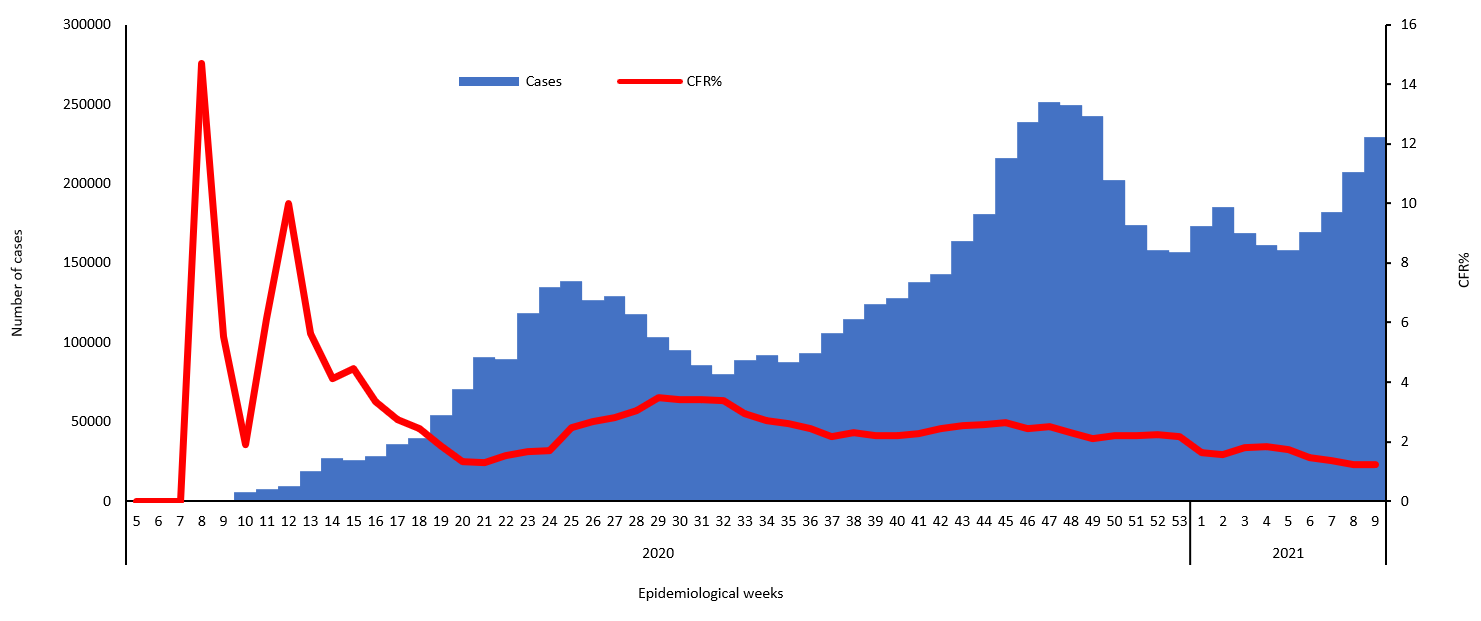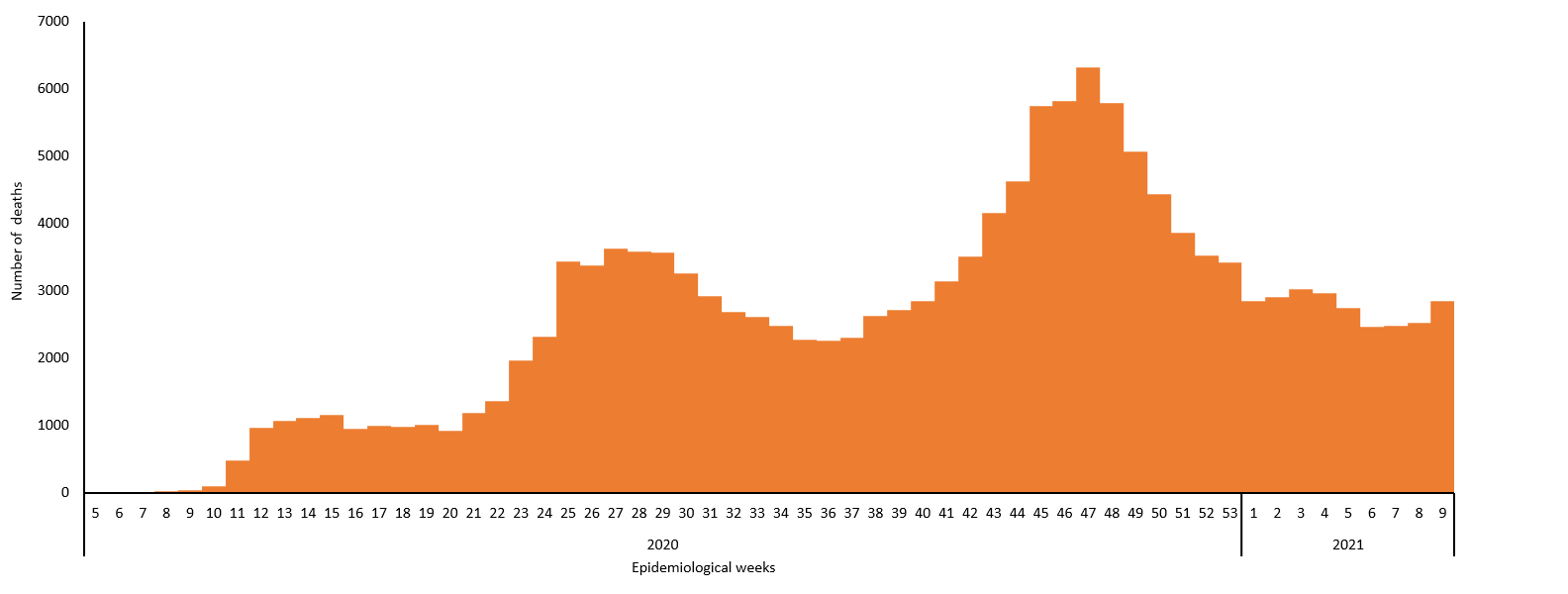The coronavirus disease COVID-19 continues to spread at the regional and global levels. As of 6 March 2021, the global cumulative incidence reached 115 672 532 reported cases and 2 571 962 associated deaths with a case fatality ratio (CFR) of 2.2%. Meanwhile, the 22 countries of the Eastern Mediterranean Region (EMR) have reported a total of 6 620 483 cases, which represent about 5.7% of the global count, with 147 396 associated deaths (CFR 2.2%). Most countries in the Region are in the community transmission phase.
Since the beginning of the outbreak, the country that has reported the highest number of total cases in the Region is Islamic Republic of Iran (1 681 682 cases; 25.4% of the Region’s total), followed by Iraq (723 189; 10.9%) and Pakistan (590 508; 8.9%). Islamic Republic of Iran also reported the highest number of total associated deaths (60 594; CFR 3.6%) followed by Iraq (13 548; CFR 1.9%) and Pakistan (13 205; CFR 2.2%). The highest CFRs were reported by Yemen (26.6%) followed by Syrian Arab Republic (6.6%), while the lowest CFRs were reported by Qatar (0.2%) followed by United Arab Emirates (0.3%) and Bahrain (0.4%).
During epidemiological week 9, the Region reported an increase of 10.6% in cases when compared to the previous week (229 427 cases compared to 207 424 cases). Similarly, a 13.1% increase was observed for associated deaths (2851 deaths compared to 2520 deaths).
Somalia, Jordan and Yemen reported a relative increase in COVID-19 activity in week 9. The cumulative number of cases increased from 6991 to 8041 in Somalia (15% weekly increase), from 386 496 to 421 415 in Jordan (9% weekly increase) and from 2273 to 2448 in Yemen (7.7% weekly increase). Somalia, United Arab Emirates and Lebanon had the largest relative increase in deaths.
In terms of testing, a total of 100 763 284 laboratory PCR tests were conducted since the start of the outbreak across the Region including 3 666 199 tests in week 9, which shows a 12% increase compared to the previous week (3 272 018). The highest number of PCR tests were reported from United Arab Emirates (32 million), followed by Saudi Arabia (13.9 million) and Islamic Republic of Iran (11.2 million). The United Arab Emirates and Bahrain are performing the highest rates of testing per capita (3236/1000 and 1868/1000, respectively). The average positivity rate for the Region is 6.6%. WHO recommends a positivity rate of around 3–12% as a general benchmark indicating adequate testing, which was achieved in most countries of the Region.
Meanwhile, COVID-19 vaccination has started in the Region. The total number of doses administered so far in 15 countries include 6 287 751 in United Arab Emirates, 4 613 292 in Morocco, 1 484 935 in Saudi Arabia, 506 519 in Bahrain, 175 000 in Kuwait, 327 582 in Qatar, 69 109 in Oman, 227 917 in Pakistan, 101 230 in Jordan, 68 527 in Lebanon, 60 486 in Iran, 31 150 in Afghanistan, 4871 in occupied Palestinian territories, 2177 in Iraq and 1315 in Egypt.
Supporting countries in the Region
The regional incident management support team continues to coordinate the response and provide technical support to countries and partners in the Region in the areas of coordination and partnership, surveillance, laboratory capacity, clinical management, infection prevention and control, risk communication and community engagement, points of entry according to the International Health Regulations (2005), research, health systems, and essential health services among others.


For more data from the Region, please visit the COVID-19 dashboard.
Subscribe to the monthly infectious hazard preparedness newsletter of WHO’s Health Emergencies Programme for latest data and analysis on epidemic- and pandemic-prone diseases, as well as news on outbreak preparedness and response within WHO’s Eastern Mediterranean Region.




